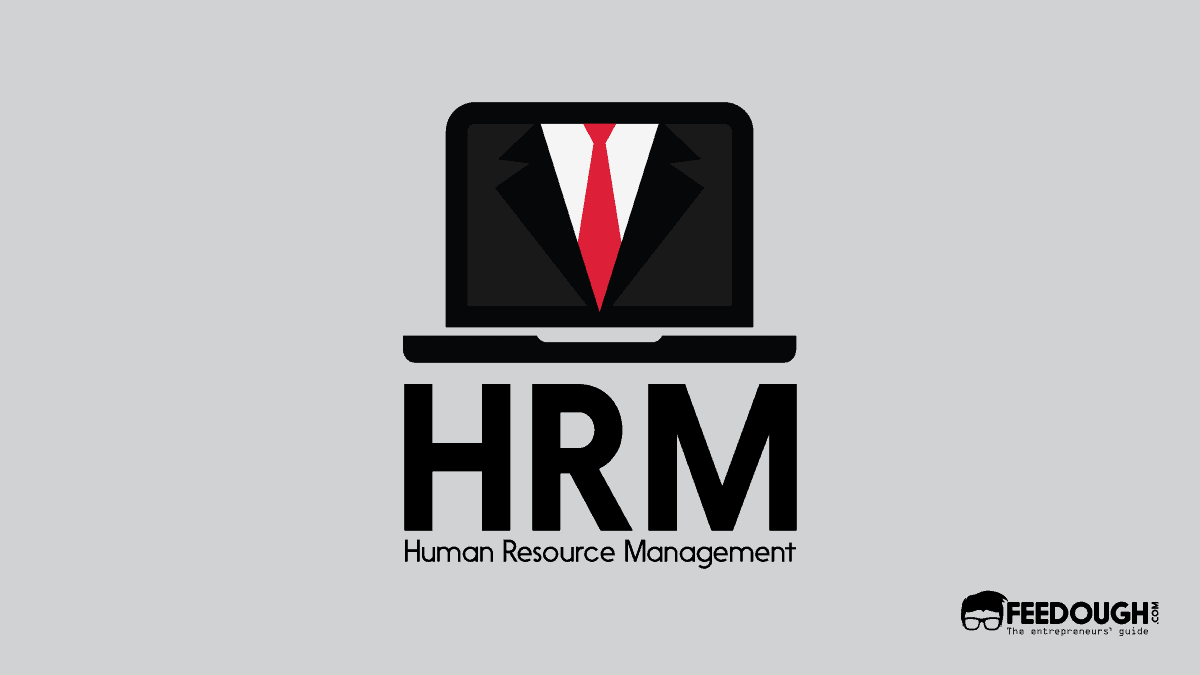Every business management influences people and processes in a particular manner to get things done effectively. They introduce strategies to unravel complexities and streamline all employees’ efforts to make the whole process easier.
In a highly dynamic environment with cut-throat competition, strategic management helps companies operate successfully by ensuring superior value delivered to customers and adapting to the constantly changing business environment.
What Is Strategic Management?
Strategic management is a continuous process of setting organisational objectives, drawing up a strategy and implementing it to derive results using business resources.
The process of strategic management is highly affected by the changes in the environment, and hence it’s an ongoing process.
Strategic management mainly focuses on setting up organisational objectives, comprehending the need for change and creating desired changes through business imperatives.
Careful strategic planning forms an integral part of strategic management to ensure the long term survival and growth of the company.
Objectives Of Strategic Management
The main objective of strategic management is to ensure increased profitability by improving the efficiency of business operations.
Other important objectives that form integral parts of the process are:
Identifying problems, comprehending new opportunities and initiating changes whenever needed.
- Creating a competitive advantage over other market players.
- Determining risks and designing strategies to address them.
- Communicating organisational objectives by setting up goals, monitoring performance against set standards, and rewarding top performers.
Importance of Strategic Management
The significance of strategic management is manifold. It defines an organisation’s mission, direction, core competencies and competitive strengths vital to ensure its success.
It involves planning and implementing strategies to ensure the long term growth and success of a company by preventing threats from other market players.
Proper strategic management ensures an organisation’s ability to adapt, innovate, and align with changing circumstances that can hugely impact its goals.
Besides this, strategic management ensures that employees work in harmony to ensure the achievement of organisational goals and also identifies opportunities for them to grow through training and development.
How Strategic Management Works – The Strategic Management Process
The process of strategic management involves some stages that are interrelated to each other.
These are briefly explained below:
Strategy Planning
Strategy planning is the first step of strategic management that helps companies define their strategies and attain organisational success. It includes identifying objectives, formulating plans and setting targets for business operations that are vital for future growth.
Environmental Scanning
Once the objectives are defined, organisations need to have a clear idea of their surroundings, i.e., the forces at work and how they could influence business performance. This is done through environmental scanning that gives companies information about market conditions and other factors that would either help or hinder the company’s future growth.
Strategy Formulation
After the forces at work are closely analysed, organisations need to define their strategies, i.e. how to deal with environmental factors, the goals that need to be achieved and how it should be done. This step includes defining strategies by evaluating internal capabilities against external opportunities.
Strategy Implementation
It implies putting together all organisational capabilities to carry out the plans. If the plan is successful, it will help achieve organisational targets and increase business growth.
Moreover, it also involves identifying possible problems and planning countermeasures to address the issues.
Evaluation and Control
The process of strategic management is never-ending. Hence, it’s important to analyse the impact of organisational decisions at regular intervals and make necessary changes in plans.
This helps achieve better results with improved performance by checking deviations from set targets and taking corrective actions whenever needed.
It also helps in anticipating risks by analysing environmental factors that could affect organisational goals.
Different Strategic Levels In Organisations
As the organisation grows in size and diversifies its product range, it can’t be controlled by a few general managers. To make the process easier and more organised, the organisation classifies itself into separate divisions that are independent. These divisions work together to bring a particular offering from the shelves to the market.
For example, Walmart has grocery, personal care, household essentials, food and beverages, cosmetics etc.
Generally, there are four main levels of management –
- Corporate level
- Business level
- Functional level
- Operational level
Corporate Level
The board of directors defines Corporate-level strategies. It covers all aspects of the company’s activities and is broad in focus. Decisions here are strategic in nature and influence overall organisational performance.
These strategies are vital for the company’s overall growth and success. For example, Google has a set of corporate strategies that include increasing online presence, engaging in social media networking etc.
Business Level
Organisations with multiple divisions or those engaged in different activities need to have separate business units under them as each division/ activity will have its own strategy to accomplish.
Business level strategies are different from corporate-level goals. They focus on specific business units and help achieve organisational objectives through divisional performance. For example, Walmart in groceries, Starbucks in beverages etc.
Functional Level
This level includes various functions that are important for the running of the business. These include accounting, marketing, logistics etc.
These functions are also known as support functions. Usually, they work in tandem with the different business units to help them achieve their goals.
For example, Starbucks has separate functional units for accounting and logistics, helping its respective business unit of beverages and food products.
Operational Level
Operational-level strategies are the most detailed in nature. It focuses on reaching out to customers by fulfilling their expectations and repeatedly coming back to buy offerings from the company.
These strategies allow organisations to meet targets for various business units by constantly looking at how they are performing against set goals. For example, Walmart has separate units for online presence and social media networking that constantly monitor their respective activities to measure the impact on the overall business.
How To Implement And Control Strategic Management?
Strategy implementation is the process where the selected strategies are effectively put into action. This step comes into the picture after the organisation has established its strategies and goals and now needs to carry out the plans.
Strategy implementation is crucial as if it fails to bring results, maybe due to faulty planning or lack of resources, the organisation may not be able to achieve its goal or targets.
To make strategy implementation effective, an organisation should work with a long term approach as opposed
- Define a strategy – The first step is to identify the goals of the organisation that a strategy is expected to achieve. The goals set should be attainable and realistic to the business environment, which when coupled with a simple strategic framework, makes it easier for everyone to understand and strive for.
- Determine and assign roles and responsibilities – Once the goals are determined, the management needs to lay down a roadmap to accumulate the business strategy and further determine the roles of all the people involved in the project. Implementing a strategic plan will require the business to ensure strong employee relationships for better communication and efficiency. The manager has to ensure that the people understand the company’s vision and then delegate tasks accordingly.
- Execute the plan and constantly monitor performance – As soon as the plan is put into action, the manager has to look out for any variables that may affect the performance or growth of the organisation. It also involves evaluating the performance of the employees, answering any questions and dealing with challenges coming their way.
- Take corrective action – It is rarely possible that once a strategy is adopted, it would remain relevant and effective throughout the course of the relevant processes. Considering the continuous fluctuations in the business market, the strategy has to be modified accordingly to achieve the desired results.
- Review and re-evaluate – After the strategy is fully implemented and the effectiveness is visible, the managers look back on the whole process and prepare an evaluation report. This determines whether the desired results are achieved yet or still need to be worked on.
What are the benefits of strategic management?
Strategic management has now become an integral part of any business organisation. Formulation of a strategy and its implementation in the right way helps a firm survive in the dynamic business environment. Only those who manage to adapt to the changes and continuously evolve can survive in the long run.
The major benefits of strategic management are:
- Provides direction – Strategic management helps define the company’s goals and enables the company to work in a particular direction in an organised manner. It helps management focus on the bigger picture to avoid deviation from the actual goal.
- Helps adapt to changes – The management needs to respond quickly to the challenges coming their way to avoid any roadblocks. Strategic management helps the company be proactive, adapt to changes, and take actions accordingly.
- Measures success – With the help of strategic management, an organisation can understand the direction, set individual employee objectives, and evaluate their performances to measure the overall progress.
- Helps in survival – With the constant state of competition and changes in the business environment, it often becomes organisations with a weak strategy framework to survive in the long run. Strategic management helps tackle this challenge and thus enhances the business’s perpetuity.
What are the limitations of strategic management?
Though strategic management builds a strong framework for any organisation, it cannot counter all the roadblocks in the organisation’s path to success.
- Unexpected changes – Though strategic management helps the business in dealing with the dynamic environment, sometimes the solution devised at the time might not work as expected. The business environment is difficult to understand, and strategic management doesn’t always guarantee a perfect remedy.
- Time-consuming – The management has to spend a lot of time preparing a business strategy and formulating a roadmap for its implementation. Not only this, communicating the strategy to the employees and ensuring that everyone has understood their objectives is not an easy process. This takes up a lot of time even before the strategy is actually implemented in the works of the organisation.
- Expensive – Strategic management is a costly process. Hiring strategic managers, experts, and working with only the organisation’s limited resources is a costly affair. Analysis of the external and the internal environments require evaluation tools as well. Arranging all these and ensuring their effective use, all when added up, comes as a limitation for the organisation.
Bottom-Line?
A company’s strategy consists of all that a manager needs to run the organisation and cumulatively please the customers. Strategic management helps the organisation to work efficiently and smartly with wise use of the company’s resources. It has a strong and positive influence over the organisation’s working, and most organisations today attempt to practice strategic management to achieve the best results.
Go On, Tell Us What You Think!
Did we miss something? Come on! Tell us what you think of this article on strategic management in the comments section.
A startup enthusiast, optimist and full time learner. With keen interest in finance and management, Khushi believes communication to be the key to every management. Always ready to explore more and walking that extra mile in putting efforts.









